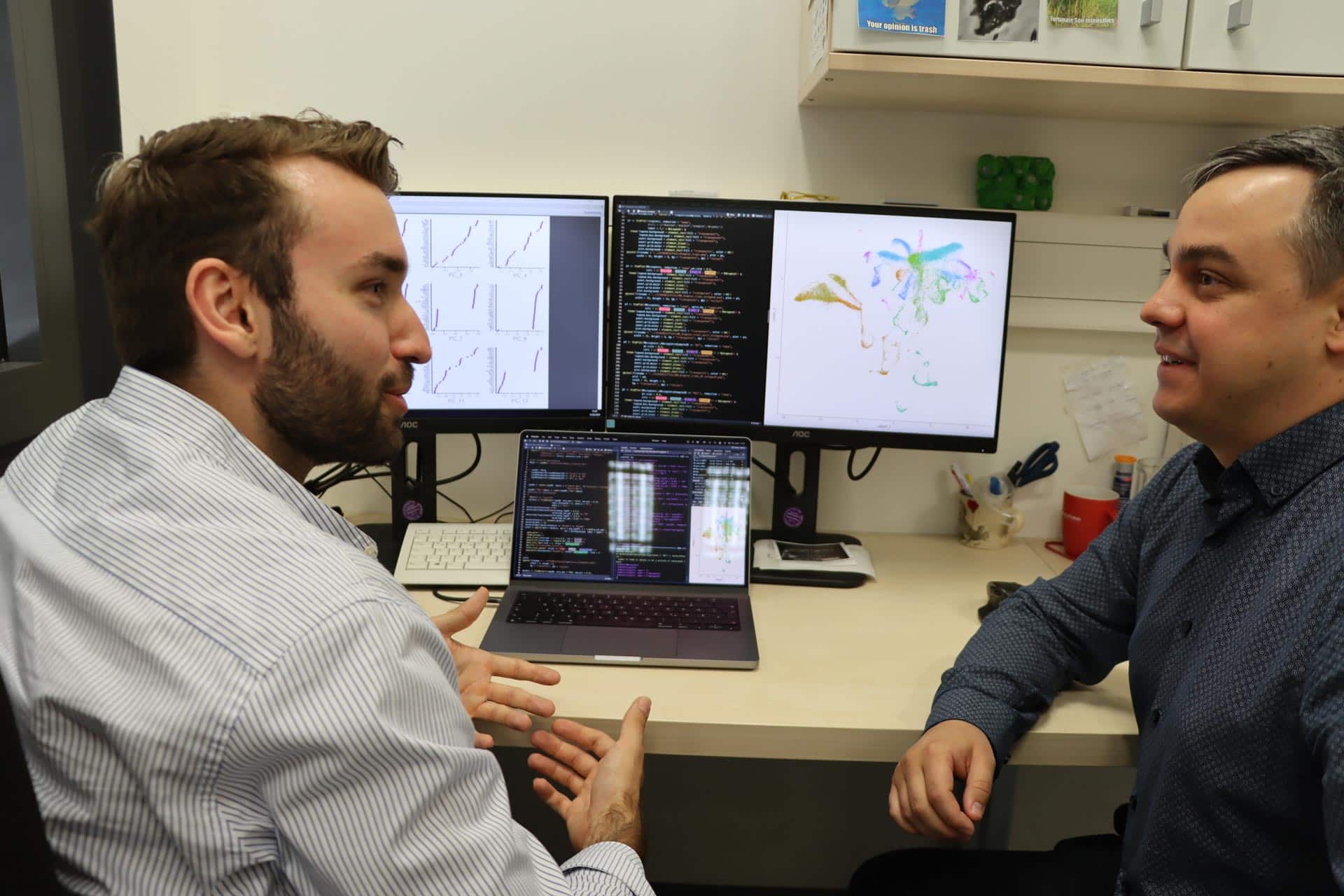Exploring fundamental mechanisms of megakaryocyte development
Our research is dedicated to deciphering the molecular mechanisms and signalling pathways crucial for megakaryocyte development and platelet formation. By employing a broad spectrum of cutting-edge techniques — including single-cell methodologies, proteomics, transgenic mouse models, advanced genomic technologies, and sophisticated in situ and in vivo imaging — our group is committed to shed light on these complex processes. Through this interdisciplinary approach, we aim to push the boundaries of megakaryocyte biology, potentially opening avenues for new approaches in disease treatment.
Our main research themes are detailed below.

Understanding phosphorylation-driven pathways in megakaryocyte development
One of our primary research themes focuses on the role of serine/threonine and tyrosine phosphorylation pathways in regulating megakaryocyte maturation and function. At the heart of our investigation is the megakaryocyte/platelet-specific receptor G6b-B, which plays a crucial role in governing the maturation, transcriptome, and signalling of megakaryocytes. By utilizing cutting-edge single-cell RNA sequencing (scRNA-seq), signalling studies, and immunofluorescent microscopy, we aim to dissect the regulatory mechanisms mediated by G6b-B. This approach also allows us to explore the heterogeneity within the megakaryocyte population, with the goal of identifying distinct cellular states and functional subtypes, broadening our insights into the complexities of megakaryocyte biology and its consequences for platelet generation.
Identifying novel central genes in megakaryocyte biology
Our research also focuses on uncovering and characterising new genes essential for the maturation of megakaryocytes. Leveraging state-of-the-art genomic technologies, including CRISPR-Cas9 gene editing, we aim to identify pivotal new genes. By deepening our understanding of the fundamental aspects of megakaryocyte biology, we aim to elucidate the roles and functions of these genes, potentially revealing novel targets that could inspire future therapeutic strategies.


